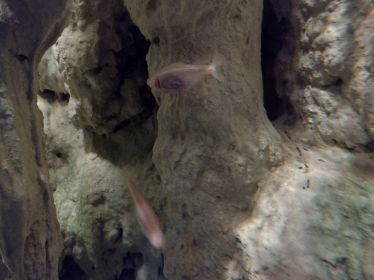- Ground sharks (Carcharhiniformes)
- Carpet sharks (Orectolobiformes)
- Stingrays (Myliobatiformes)
- Skates (Rajiformes)
- Bichir (Polypteriformes)
- Lungfish (Dipnoi)
- Gar (Lepisosteiformes)
- Eel (Anguilliformes)
- Bony-tongued fishes (Osteoglossiformes)
- Carps (Cypriniformes)
-
Tetra (Characiformes)
- Alestidae
-
Characidae
- Blackline penguinfish (Thayeria boehlkei)
- Cardinal tetra (Paracheirodon axelrodi)
- Gold tetra (Hemigrammus rodwayi)
-
Mexican tetra (Astyanax mexicanus)
- Red Laser Tetra (Hemigrammus coeruleus)
- Red phantom tetra (Hyphessobrycon sweglesi)
- Saiz's tetra (Hyphessobrycon saizi)
- Twospot astyanax (Astyanax bimaculatus)
- Distichodontidae
- Gasteropelecidae
- Lebiasinidae
- Serrasalmidae
- South American knifefish (Gymnotiformes)
- Catfish (Siluriformes)
- Salmon (Salmonidae)
- Pikes (Esociformes)
- Cod fish (Gadiformes)
- Cardinalfish (Kurtiformes)
- Gobies (Gobiiformes)
- Pipefish (Syngnathiformes)
- Gouramies (Anabantiformes)
- Flatfish (Pleuronectiformes)
- Cichlides (Cichliformes)
- Rainbowfish (Atheriniformes)
- Killifish (Cyprinodontiformes)
- Blenny (Blenniiformes)
- Wrasse (Labriformes)
- Anglerfish (Lophiiformes)
- Pufferfish (Tetraodontiformes)
- Scorpionfish (Scorpaeniformes)
- Ray-finned fish (Perciformes)
- Dragonet (Callionymiformes)
- Weever (Trachiniformes)
Mexican tetra (Astyanax mexicanus)

The Mexican tetra (Astyanax mexicanus), also known as the blind cave fish, blind cave characin, and blind cave tetra, is a freshwater fish of the family Characidae of the order Characiformes. The type species of its genus, it is native to the Nearctic realm, originating in the lower Rio Grande and the Neueces and Pecos Rivers in Texas, as well as the central and eastern parts of Mexico.
Growing to a maximum total length of 12 cm (4.7 in), the Mexican tetra is of typical characin shape, with unremarkable, drab coloration. Its blind cave form, however, is notable for having no eyes or pigment; it has a pinkish-white color to its body (resembling an albino).
This fish, especially the blind variant, is reasonably popular among aquarists.
A. mexicanus is a peaceful species that spends most of its time in midlevel water above the rocky and sandy bottoms of pools and backwaters of creeks and rivers of its native environment. Coming from a subtropical climate, it prefers water with 6.5–8 pH, a hardness of up to 30 dGH, and a temperature range of 20 to 25 °C (68 to 77 °F). In the winter, some populations migrate to warmer waters. Its natural diet consists of crustaceans, insects, and annelids, although in captivity it is omnivorous.
The Mexican tetra has been treated as a subspecies of A. fasciatus, but this is not widely accepted. Additionally, the blind cave form is sometimes recognized as a separate species, A. jordani, but this directly contradicts phylogenetic evidence.
In Aquariums and Zoos: common in european aquariums
Growing to a maximum total length of 12 cm (4.7 in), the Mexican tetra is of typical characin shape, with unremarkable, drab coloration. Its blind cave form, however, is notable for having no eyes or pigment; it has a pinkish-white color to its body (resembling an albino).
This fish, especially the blind variant, is reasonably popular among aquarists.
A. mexicanus is a peaceful species that spends most of its time in midlevel water above the rocky and sandy bottoms of pools and backwaters of creeks and rivers of its native environment. Coming from a subtropical climate, it prefers water with 6.5–8 pH, a hardness of up to 30 dGH, and a temperature range of 20 to 25 °C (68 to 77 °F). In the winter, some populations migrate to warmer waters. Its natural diet consists of crustaceans, insects, and annelids, although in captivity it is omnivorous.
The Mexican tetra has been treated as a subspecies of A. fasciatus, but this is not widely accepted. Additionally, the blind cave form is sometimes recognized as a separate species, A. jordani, but this directly contradicts phylogenetic evidence.
In Aquariums and Zoos: common in european aquariums
woaqzo@yahoo.com